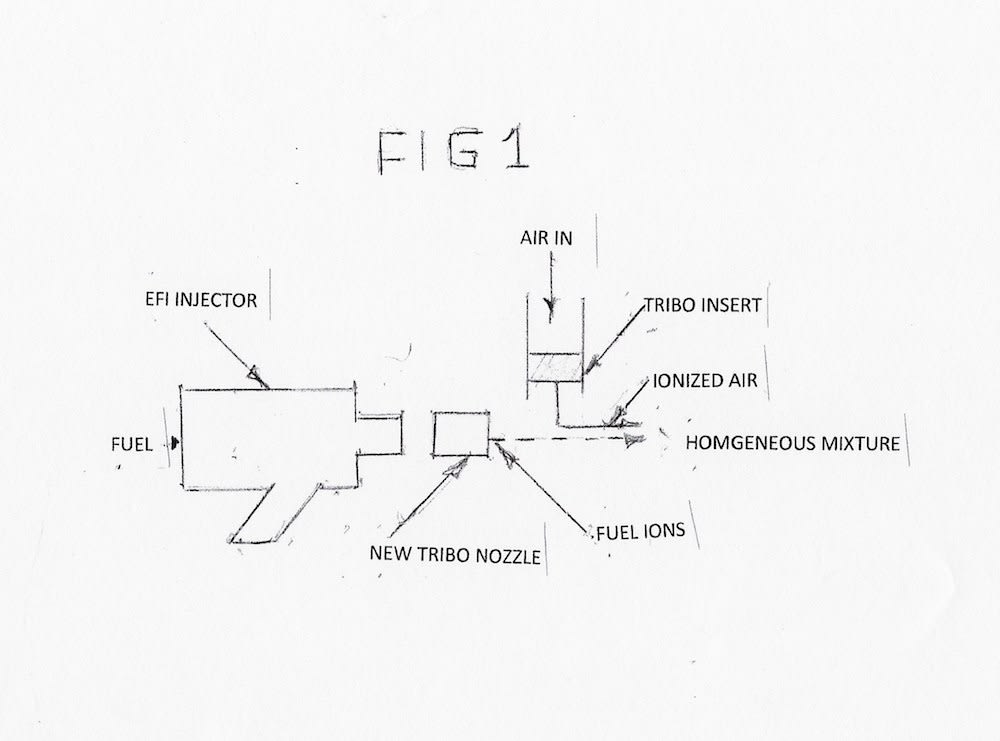A new mode of combustion in the IC Engine has been significantly demonstrated, patented and can achieve near ideal combustion. This mode would occur in the cylinder proper and retain all combustion from an accelerated start to a complete finish. The mode noted is the use of self contained static electricity to modify both the hydrocarbon fuel and the second component of combustion, the air supply. The technology that is used is that of the little known phenomenon of triboelectricity.
Triboelectric materials are materials that can obtain and hold an electrical charge on their surface (usually polymers) when subjected to friction or pressure conditions with another charge carrying material. Metals under normal conditions do not retain an electrical charge as they are usually grounded.
Automobile owners perform the potentially dangerous act of filling the gasoline tank as a fire or explosion could result if static electricity was not controlled. The Teflon hose and flowing gasoline will highly charge the gasoline and charged fumes could ignite by a spark if the metal nozzle was not grounded.
A lightning bolt is a spectacular display of static electricity. The strong electric field ionizes the air and creates reactive oxygen compounds (ROC) such as ozone. It is the pungent odor smelled following a strong lightning storm.
Near ideal combustion will occur as follows:
• Create as small a fuel particle as possible. The new triboelecric mode will create submicron (nano) particles very much smaller than those formed in existing IC Engines.
• Fill the cylinder completely and uniformly. The fuel particles will have a like electrical charge and repel one another and homogeneously completely fill the cylinder.
• Create a homogeneous mixture of fuel and air. The ionized air will have a like charge similar to the charged fuel but of opposite polarity creating a perfect fuel/air mixture for combustion. A spark will ignite the fuel with no ignition delay. No unburned hydrocarbons, carbon monoxide or oxides of nitrogen will be produced.
The triboelectric treatment will consist of a new nozzle added to the existing EFI body and a triboelectric insert in the air supply consisting of easily fabricated inexpensive known materials. (Fig. 1) The major advantages of this combustion mode are very significant fuel savings, emission reduction and retrofitting in a NOW time frame as near ideal combustion is achieved.
Like this entry?
-
About the Entrant
- Name:Ronald Tamol
- Type of entry:individual
- Software used for this entry:not applicable
- Patent status:patented

